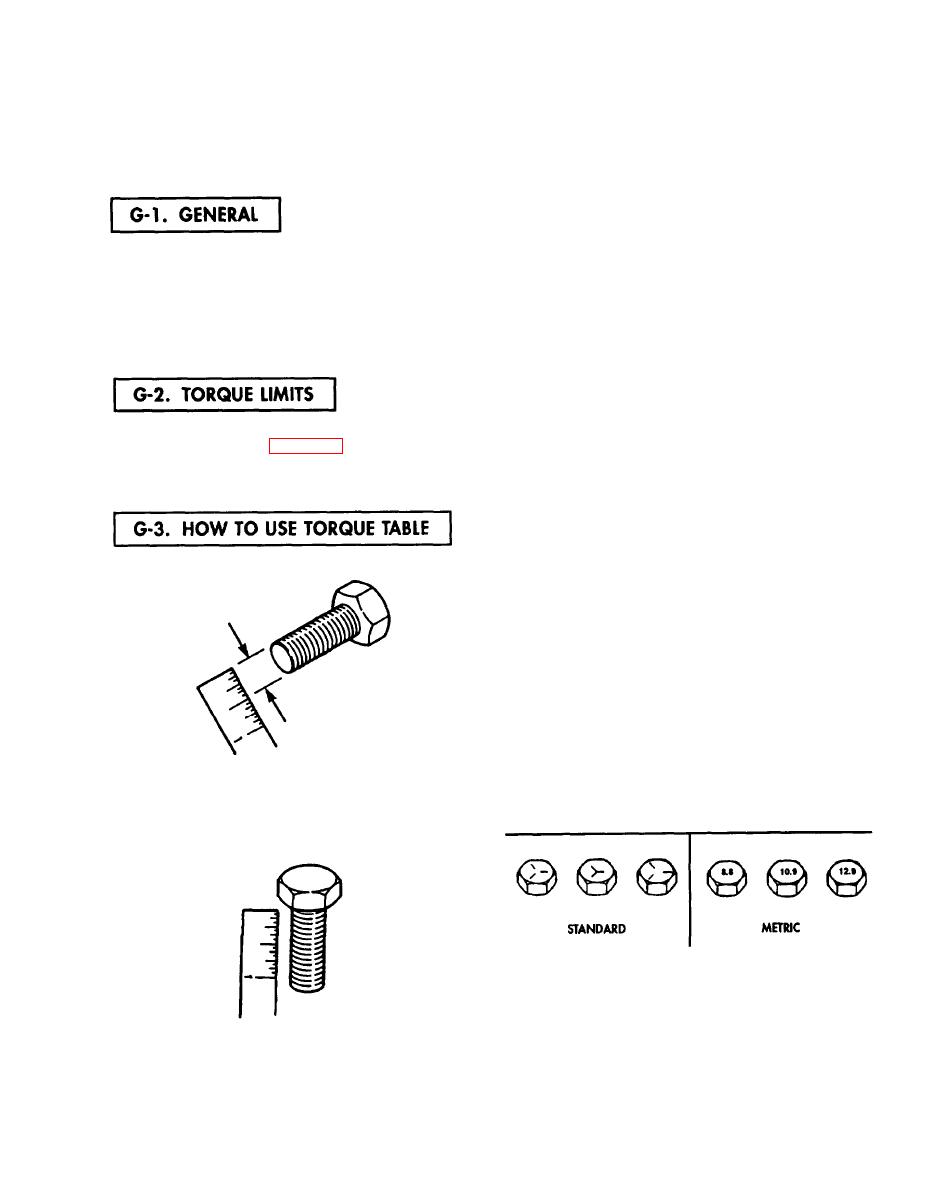
TM 9-2320-272-24-4
APPENDIX G
TORQUE LIMITS
This appendix provides general torque limits for screws used on M939, M939A1, and M939A2 vehicles.
Special torque limits are indicated in the maintenance procedures for applicable components. The general
torque limits given in this appendix shall be used when specific torque limits are not indicated in the
maintenance procedure. These general torque limits cannot be applied to screws that retain rubber
components. The rubber components will be damaged before the correct torque limit is reached. If a special
torque limit is not given in the maintenance instructions, tighten the screw or nut until it touches the
metal bracket, then tighten it one more turn.
Table G-l lists dry torque limits. Dry torque limits are used on screws that do not have lubricants
applied to the threads. Table G-2 lists wet torque limits. Wet torque limits are used on screws that have
high-pressure lubricants applied to the threads. For metric fasteners, refer to table G-3 for torque limit
requirements.
Under the heading SIZE, look down the left-
c..
hand column until you find the diameter
of the screw you are installing (there will
usually be two lines beginning with the
same size).
In the second column under SIZE, find the
d.
number of threads per inch that matches the
number of threads you counted in step b.
CAPSCREW HEAD MARKINGS
Metric screws are of three
Manufacturer's marks may
grades: 8.8, 10.9, and 12.9.
vary. These are all SAE
Grades & Manufacturer's marks
Grade 5 (3-line).
a.
Measure the diameter of the screw you are
appear on the screw head.
installing.
e.
To find the grade screw you are installing,
match the markings on the head to the
correct picture of CAPSCREW HEAD
MARKINGS on the torque table.
f.
Look down the column under the picture you
found in step e. until you find the torque
b.
Count the number of threads per inch.
limit (in lb-ft or Nm) for the diameter and
threads per inch of the screw.
G-1


